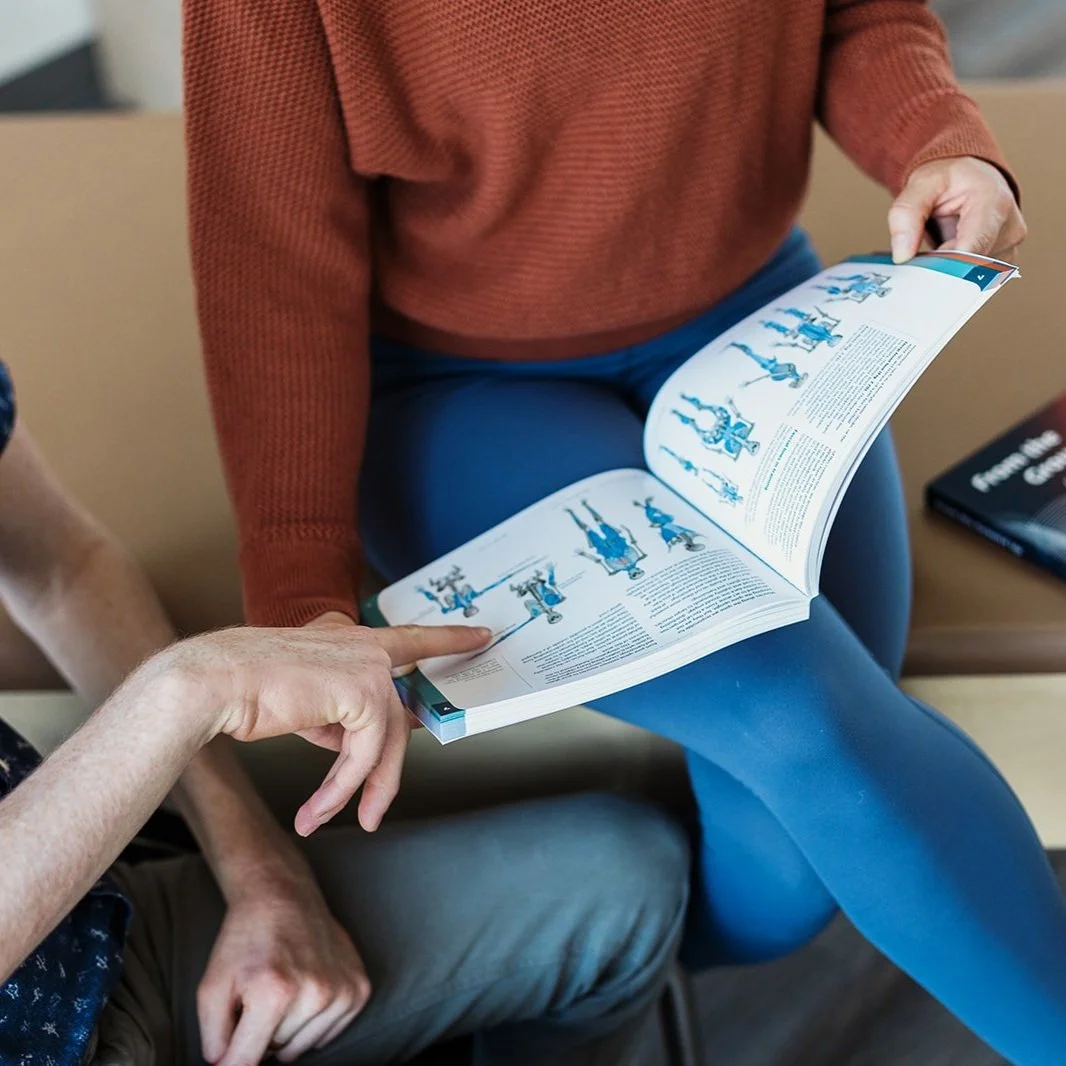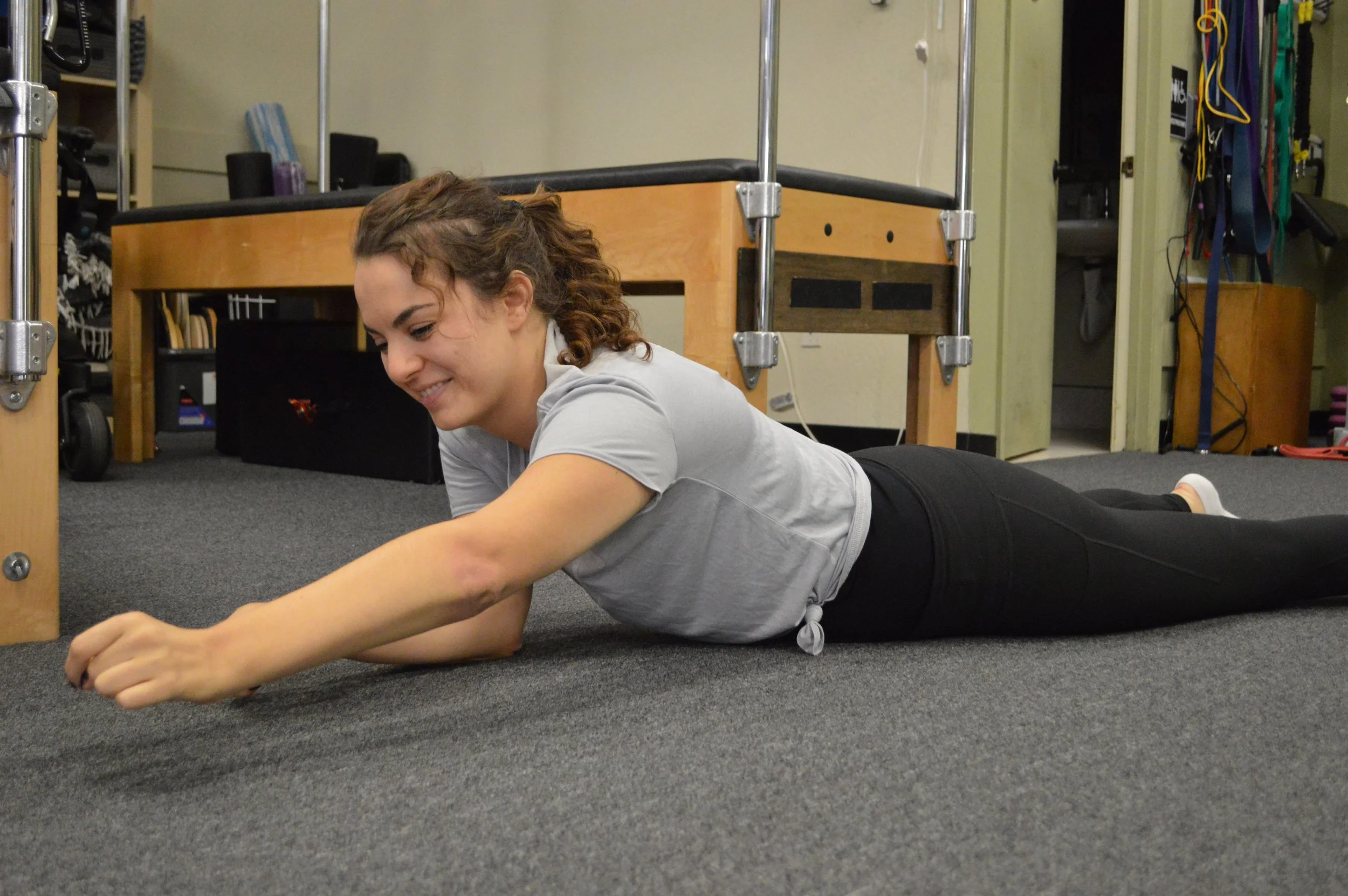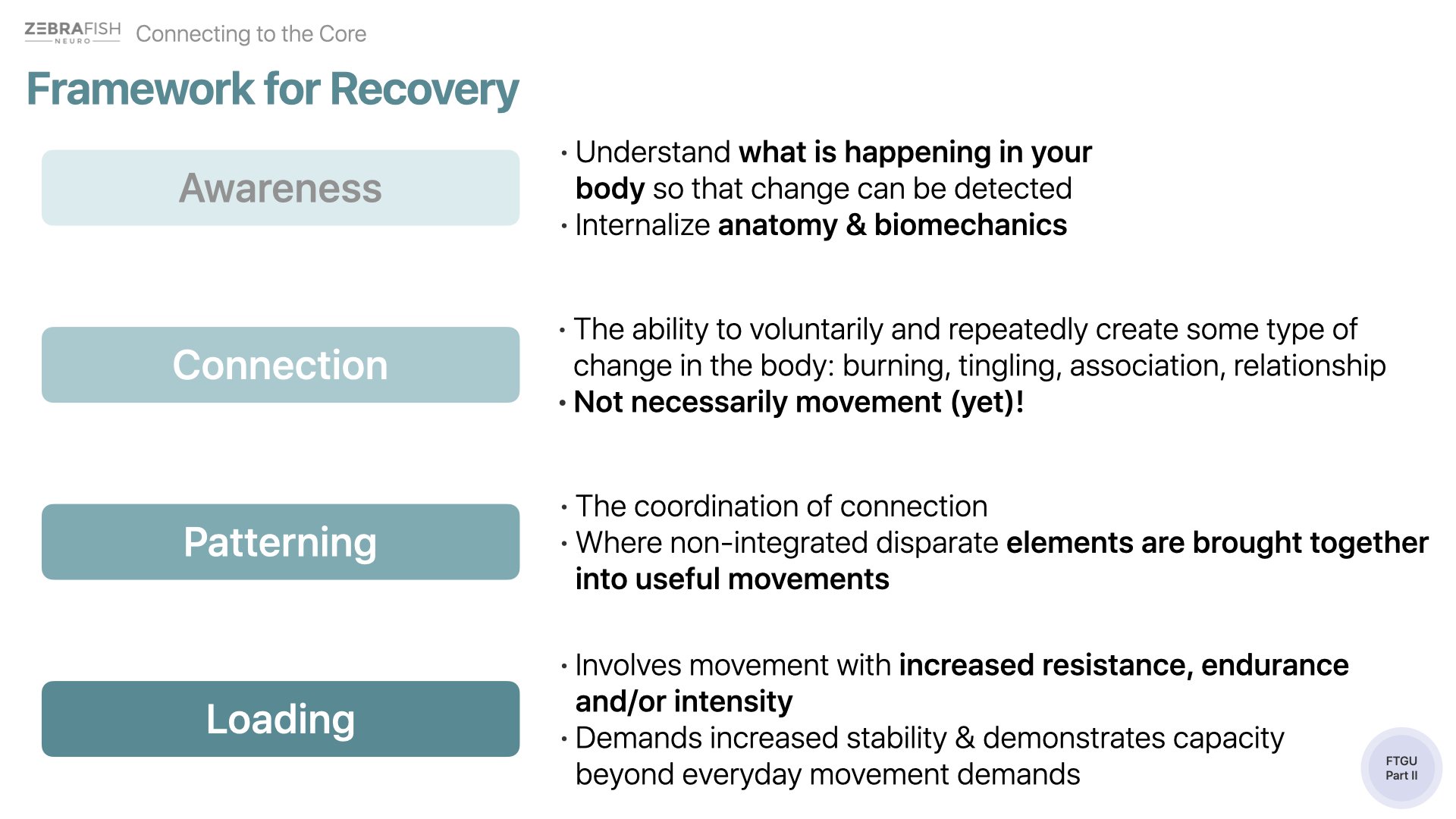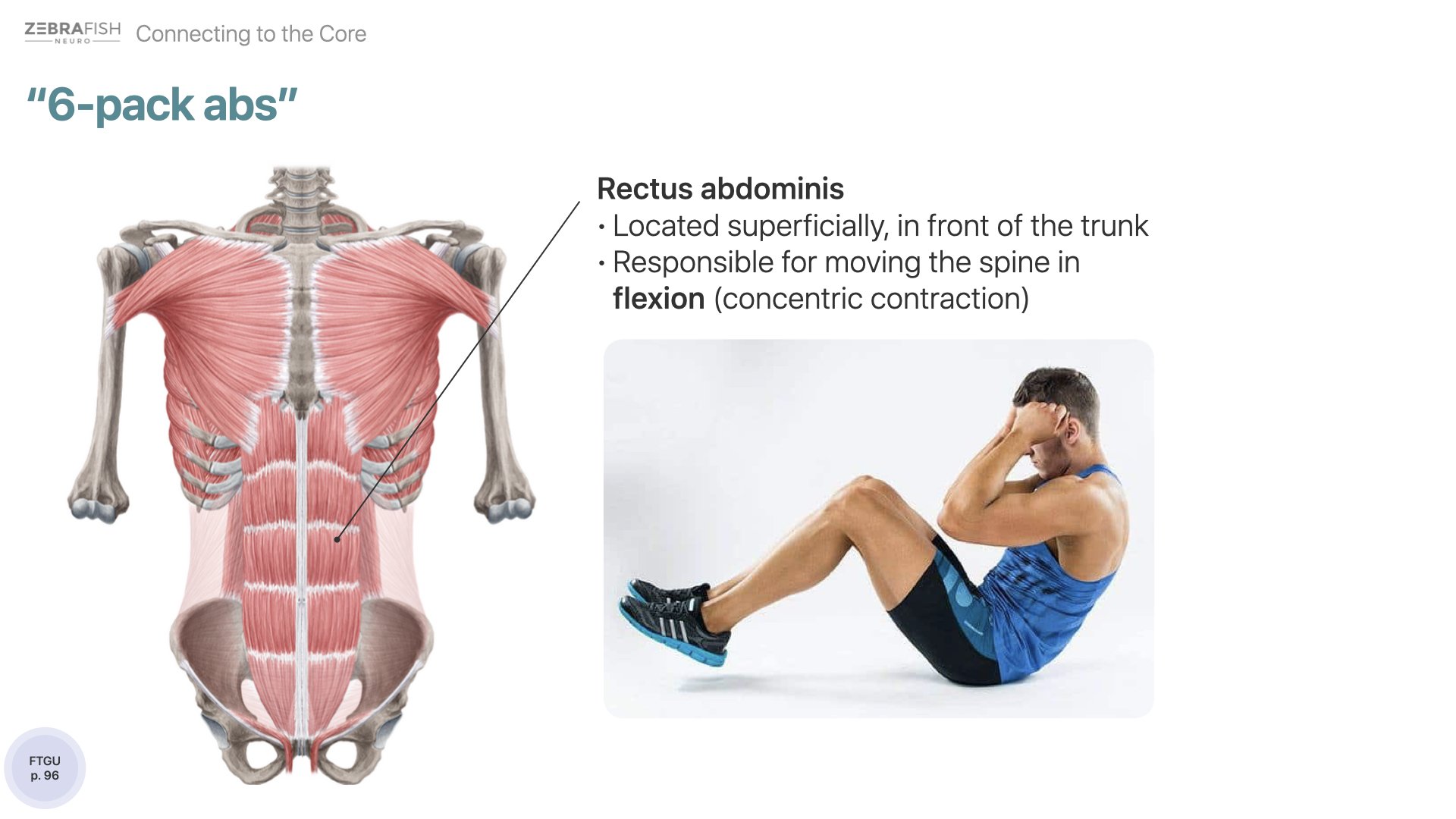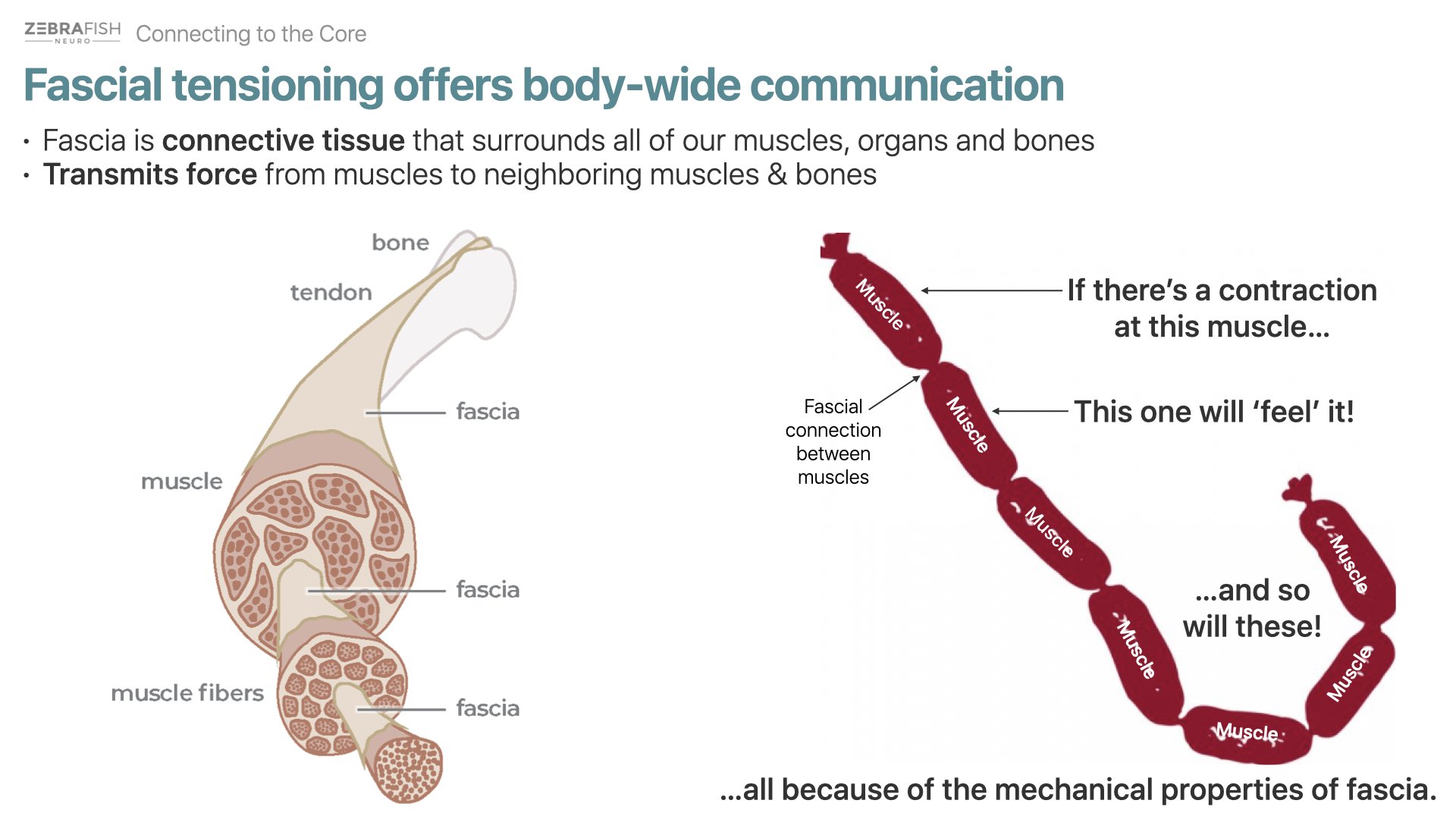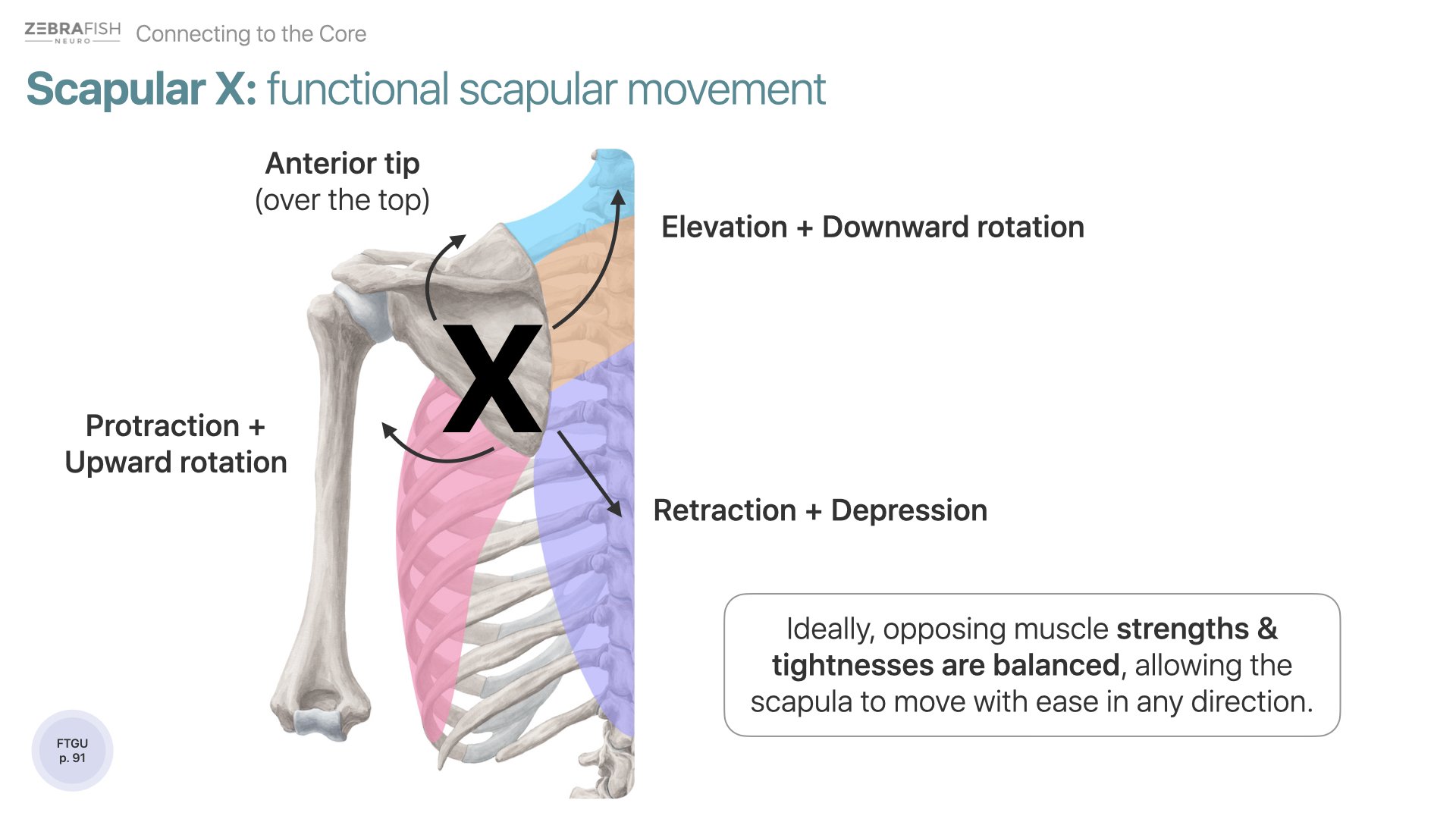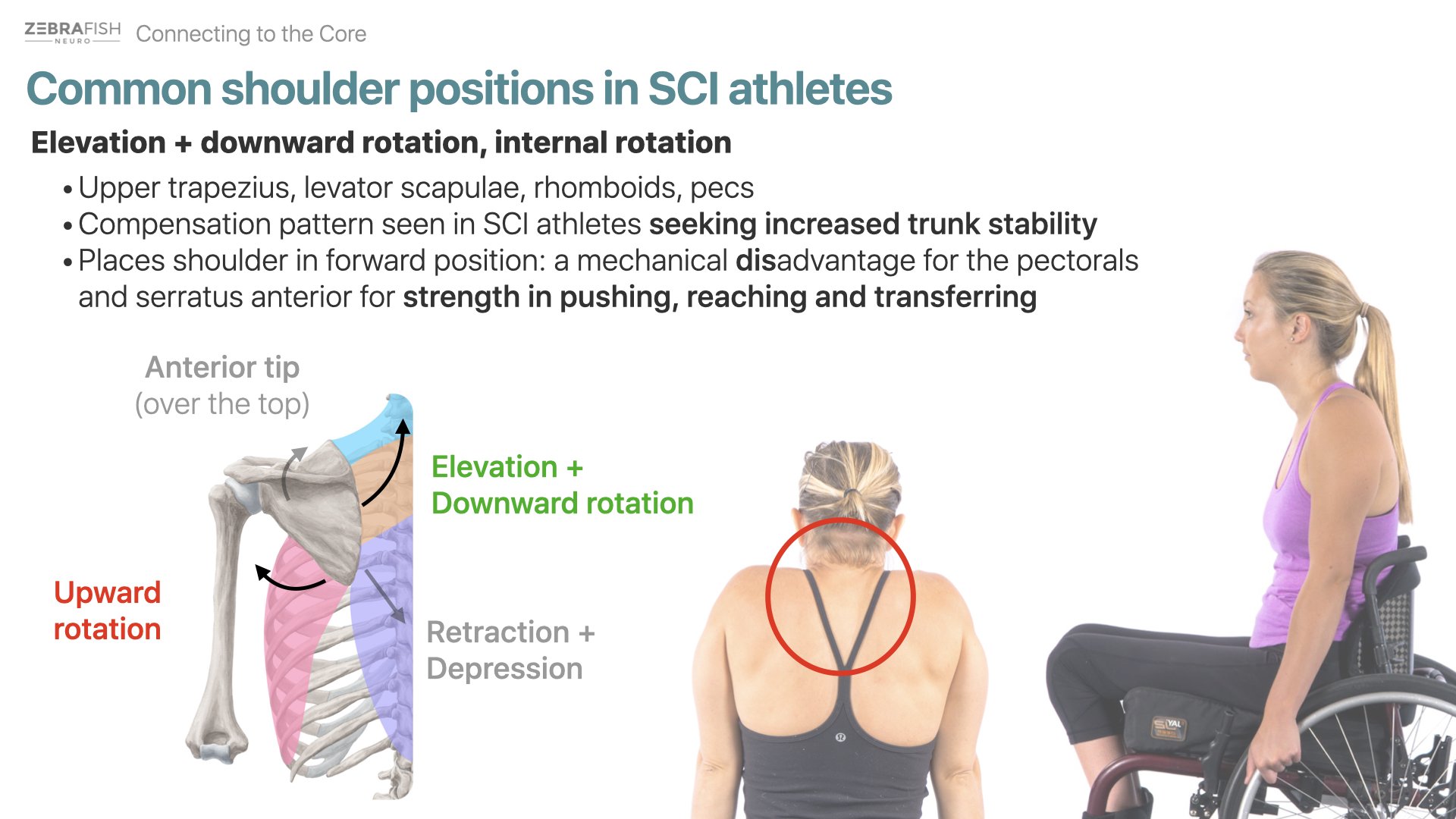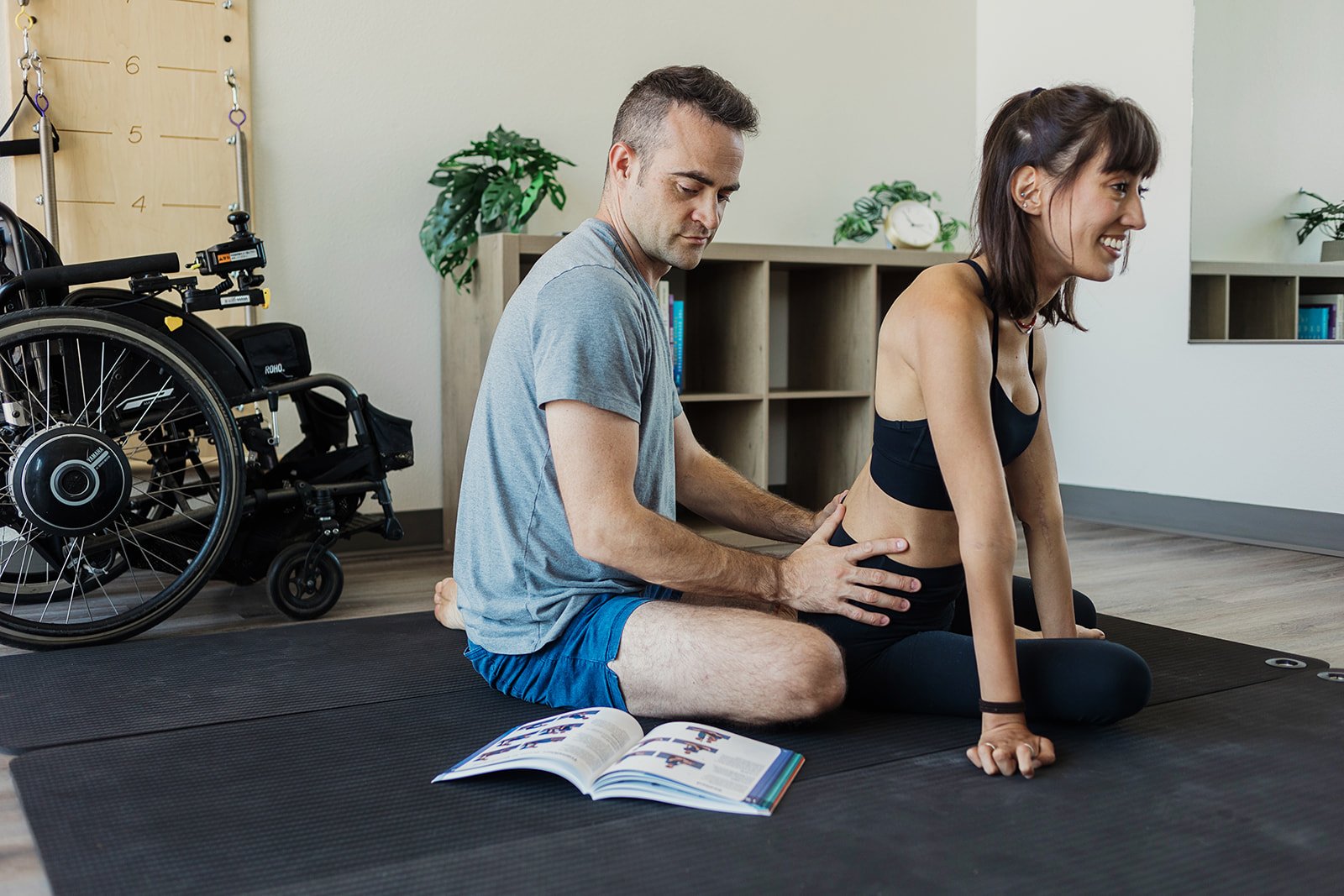
Self-paced, online discussion + exercise program
Connecting to the Core
An integrated approach to
trunk control & posture after SCI
"Just squeeze your abs more!"
"Just squeeze your abs more!"
Coming from trainers and therapists, this ask can be frustrating and confusing for those with paralysis: it’s a challenge to simply feel abdominal muscles, let alone engage them…
Is there a better way to improve core strength?
HINT:
The key to improving your core isn’t more sit-ups…
Turn on the sound to listen in!
Explore the role of fascial lines in improving core strength after a spinal cord injury.
Using the “spiral fascial line,” you can leverage the strength and connection you have in your shoulders to create tension in the core and postural muscles for more efficient and improved movement: rolling over, seated stability, transfer control and so much more!
The spiral fascial line is just one of several fascial chains that can be used to connect to areas in the body we are looking to re-integrate. If you have ever wondered how fascial systems can support you (or your clients) in SCI recovery, this program provides the fundamental understanding to get started.
“Working through fascial lines has helped me learn how to reconnect with and use my body.
Before I would try and "muscle through" any movement that seemed too difficult. But now I know what connections I should try to tap into instead. With this approach, I have improved my core, posture, bridging, kneeling, floor work, balance and walking.”
— Alanna DeSalvo, C5/6 SCI
What’s included:
Intro to fascial lines, fundamental anatomy & discussion
divided into 7 self-paced modules
Accessible exercises to do in the wheelchair & on the floor
video demonstrations & PDF to follow
Unlimited access &
re-play for an entire year

We’ve got the program…
It’s up to you to get started.
In this program, you will:
Harness the potential of fascial lines for body reconnection after paralysis
Learn SCI-appropriate exercises that leverage these fascial connections, to be practiced from the wheelchair and/or on the floor.
Review essential anatomy of the shoulders & trunk to better visualize your movements
Apply fascial connectivity to improve other daily movements/tasks
All strategies and concepts discussed in this workshop can be applied to SCI athletes of all injury levels.
We recommend completing the programs in the following sequence:
STEP 1:
Connecting to the Core
An integrated approach to
trunk control & posture after SCI
Save $10 when you purchase TWO programs together!
-
Save $10 when you purchase TWO programs together! -
STEP 2:
Improving Posture after SCI
Concepts & exercises
to build trunk control
STEP 3:
Whole-Body Integration
Strategies to facilitate
deeper & lasting connections
Need a little help with
at-home program implementation?
Check out our workshop for caretakers, partners, or family members of those with SCI assisting in exercises at home:
We are confident that this underrated approach to improving core strength will have you connecting right away.
FAQs
-
Short story: This program was made for SCI athletes. We use language that anyone can understand, including those with little-to-no previous understanding of anatomy & movement concepts.
However, trainers & rehab professionals have benefited from this introduction on how to use fascial lines in body re-connection after paralysis. The simple-to-follow explanations of somewhat complex concepts help clinicians find the words to use when discussing fascial lines with clients/patients.
-
A few of the foundational exercises can be done from a wheelchair and the rest are to be done on the floor - improving core strength requires a bit of space to move around!
-
Definitely – the whole idea of fascial connectivity is that you can extend connection from muscles that you can move, along fascial lines, into areas where muscles are less active. Over time this practice will create new movement patterns, and many SCI athletes find that they can connect to regions they never thought possible: lumbar spine, abdominals, or glutes.
-
Certainly – we find that athletes with incomplete injuries can often leverage their fascial lines in multiple places, which accelerates the acquisition of new connections.
-
You will be able to access and revisit the videos for an entire from the purchase date, but you can download the PDFs to have them forever.
We’ll remind you about 45 days before your log-in is about to expire.
-
From here, we recommend moving onto the “Improving Posture” DIY rehab program - which includes another bit of lecture and an even more in-depth floor routine to develop posture & core strength.
Still not sure if this program is for you? Email us, let’s talk it out!



